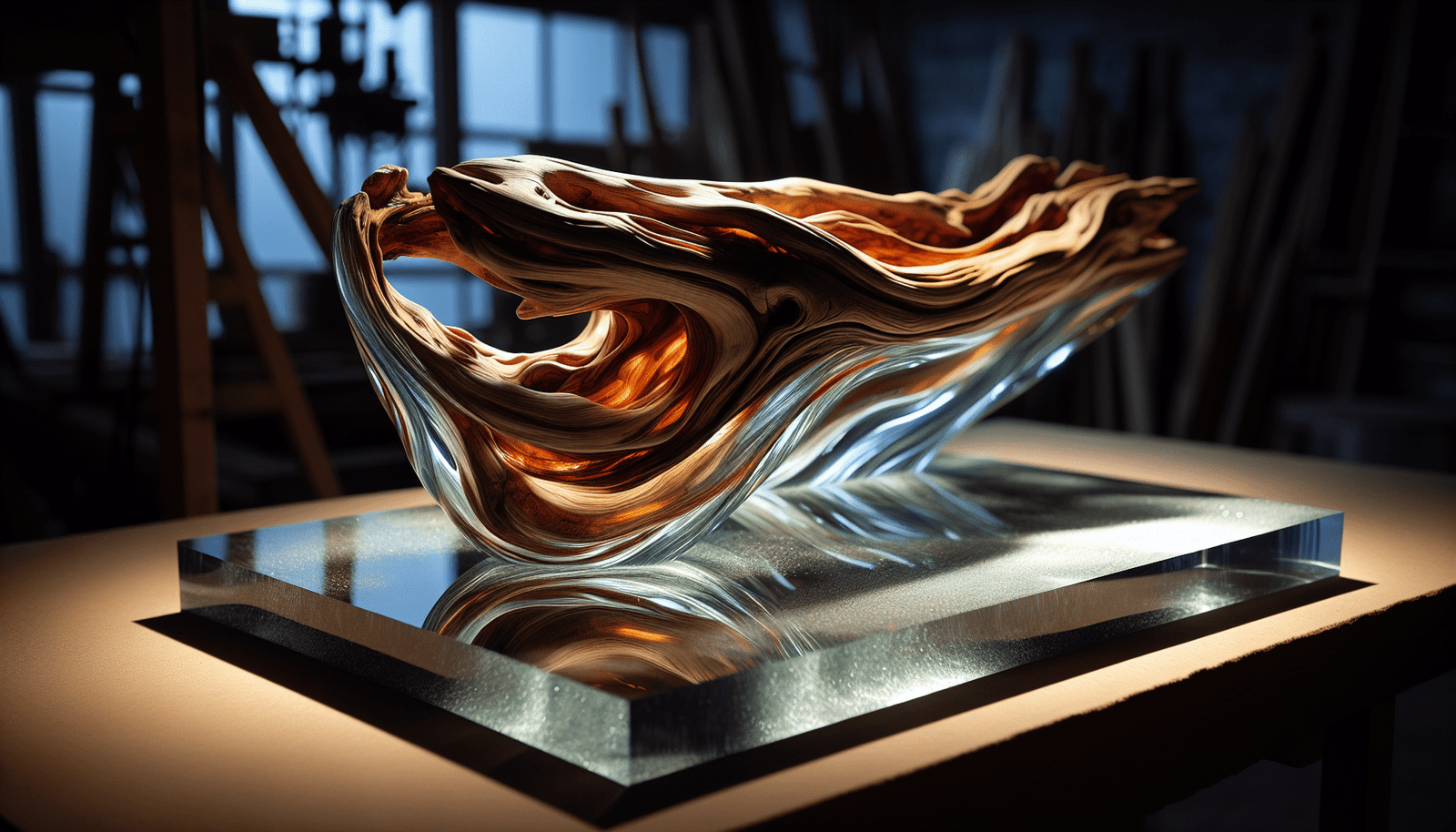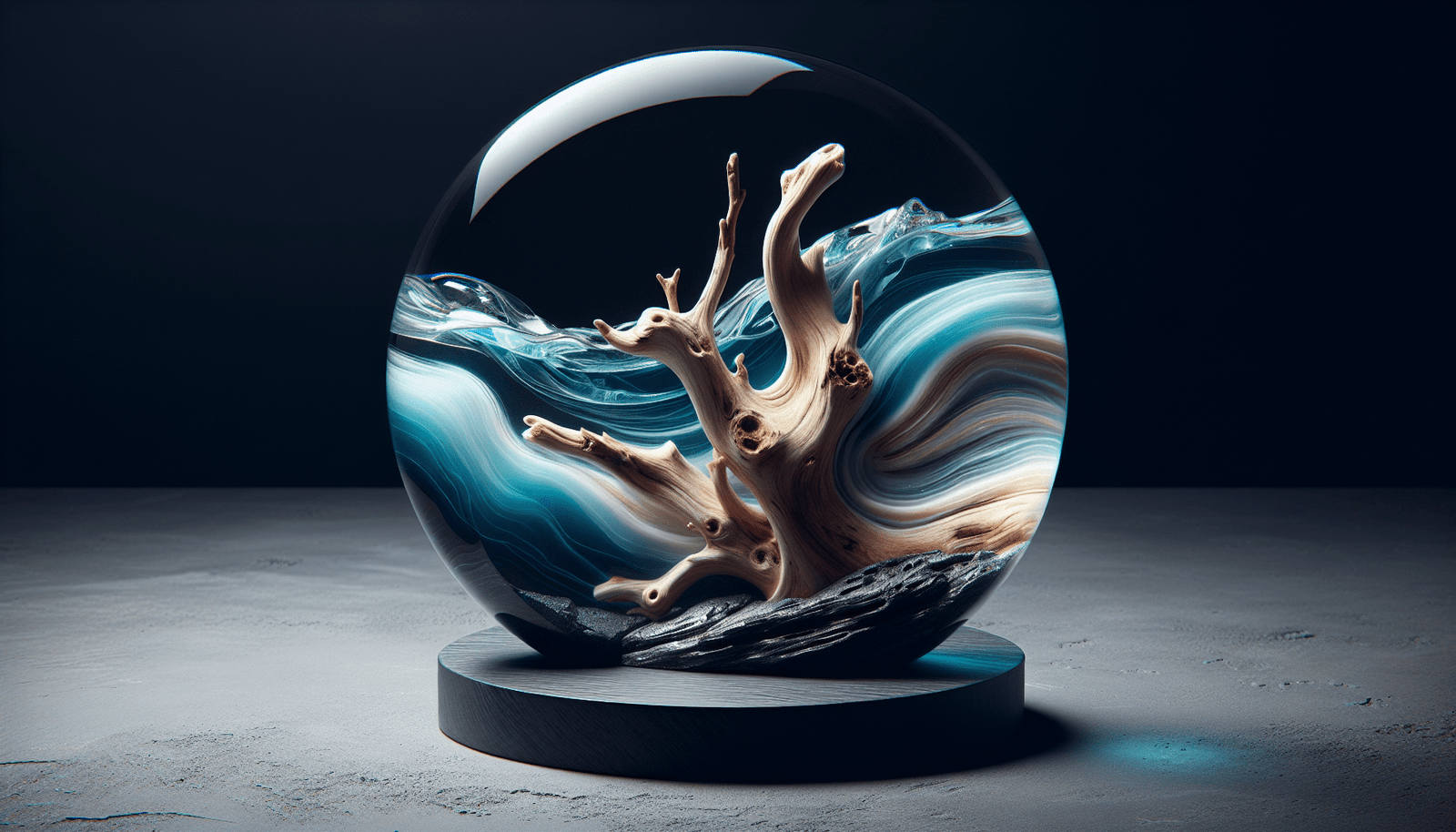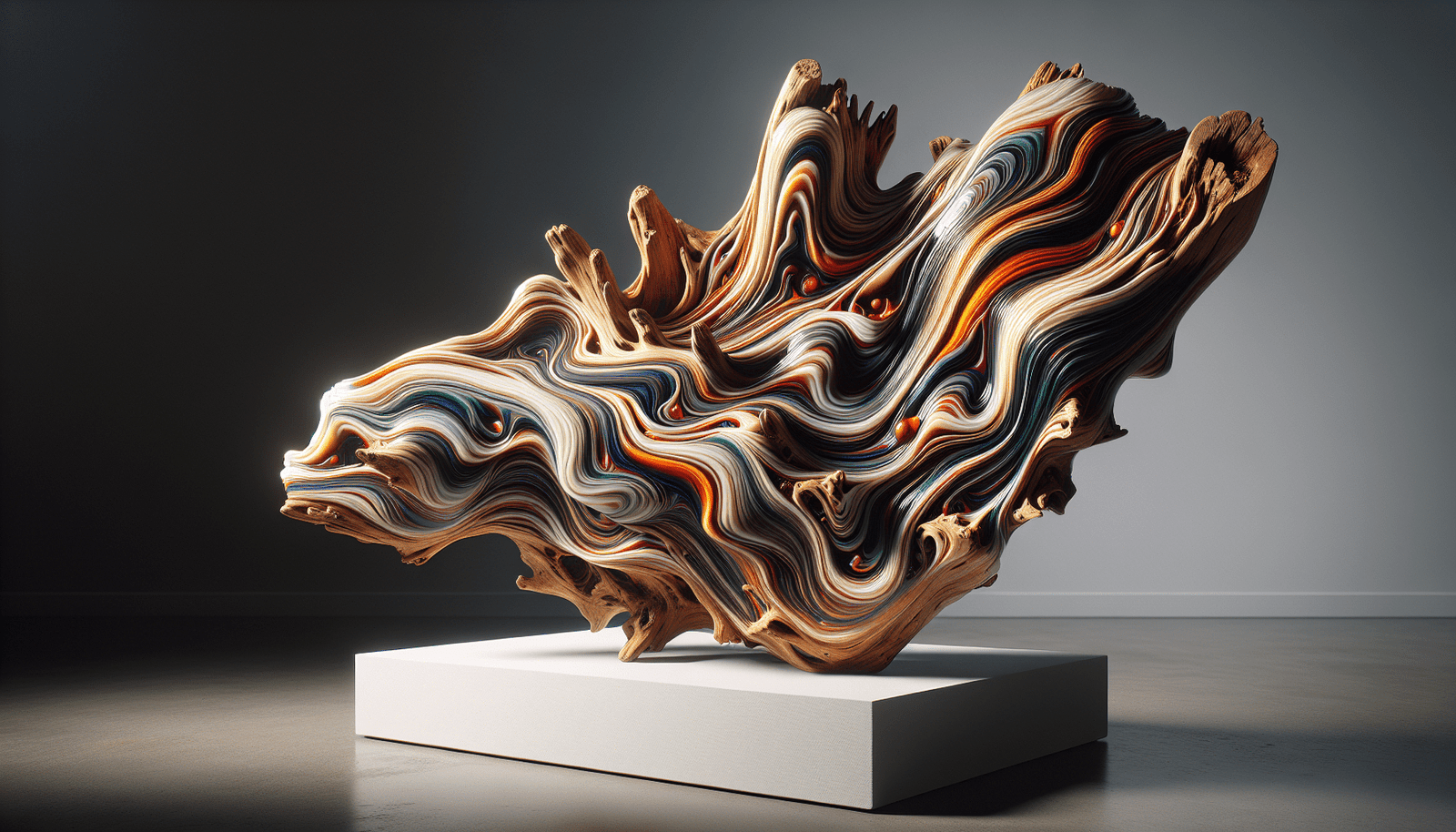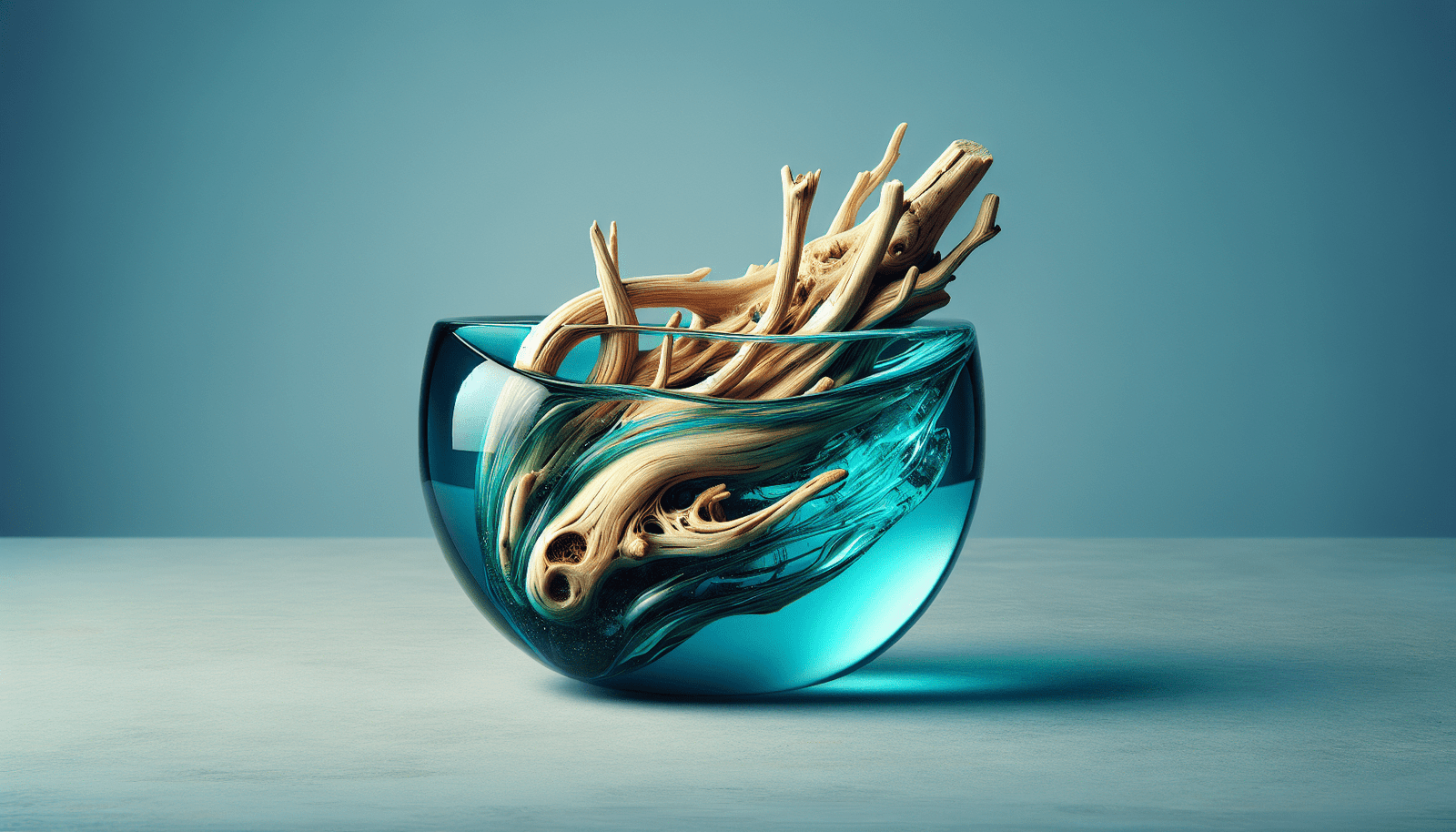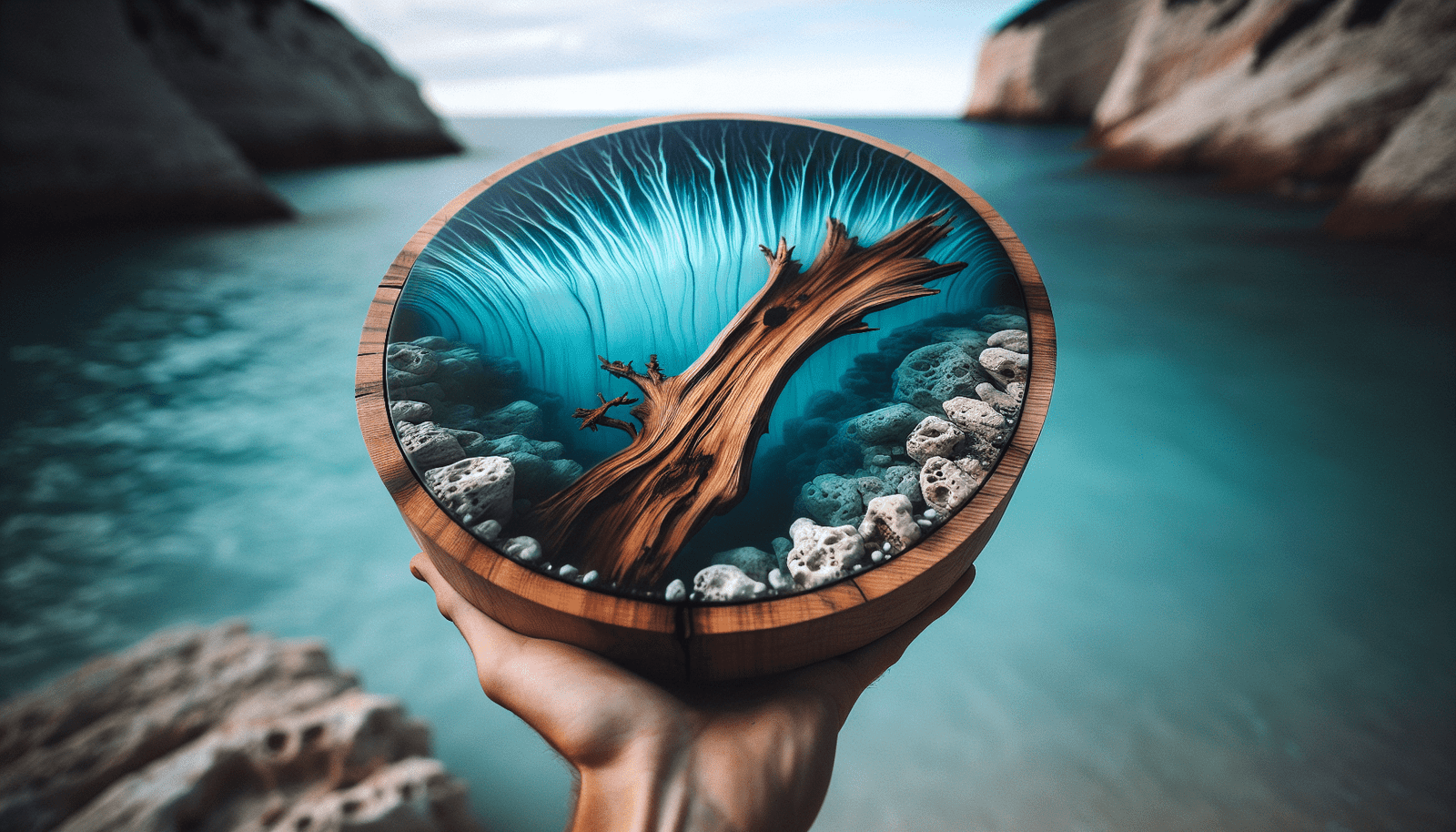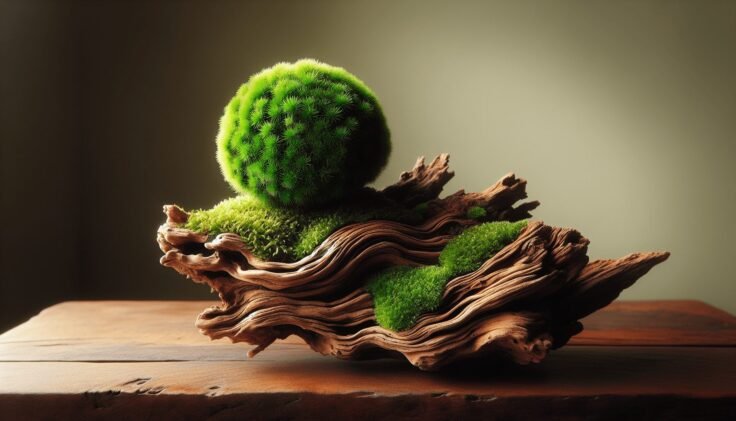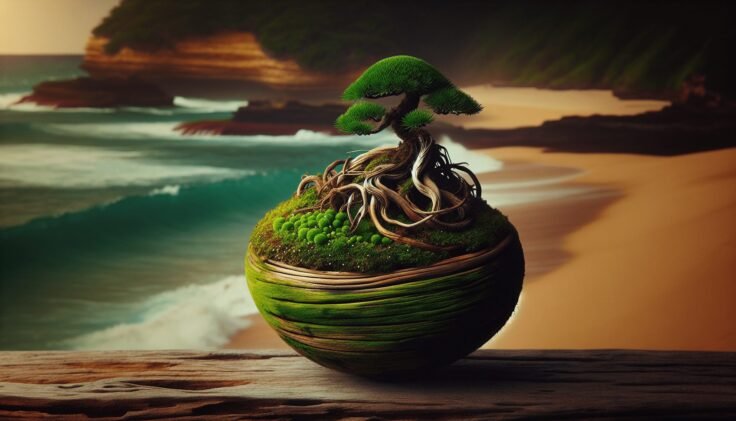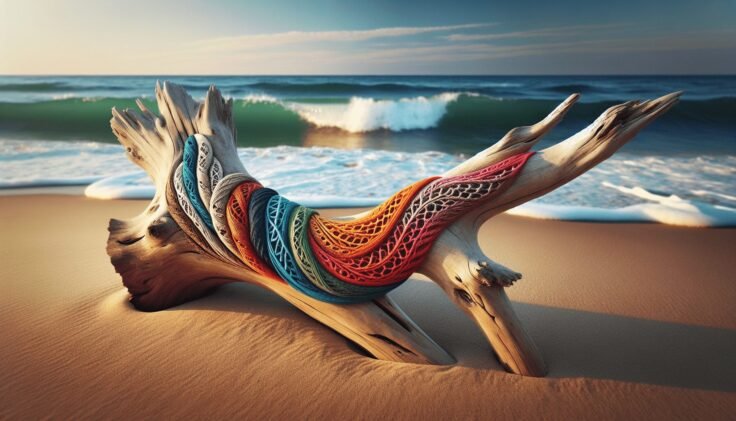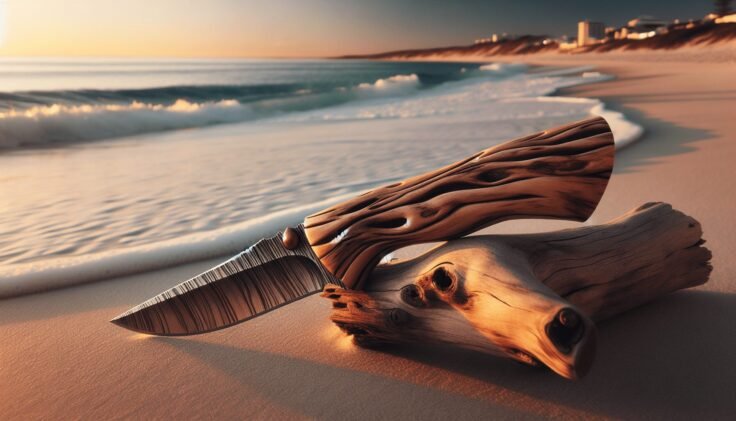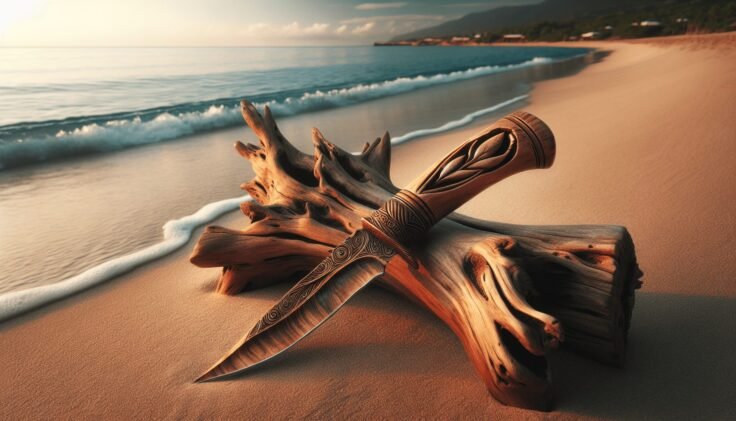Have you ever looked at a piece of driftwood and imagined what stories it could tell? As you walk along a beach, with the gentle waves kissing the shoreline, you might notice intriguing pieces of driftwood scattered about, each with its own unique shape and character. Often, these naturally sculpted wood pieces hold untapped potential, waiting for someone creative to transform them into a functional art piece, like a stunning lampshade for your home.
What is Driftwood?
Driftwood is a term for wood that has been washed onto the shore by winds, waves, tides, or floods. The process of becoming driftwood often takes years, with the wood picked up by the ocean and weathered over time. This weathering process enhances its unique texture, making each piece different. Driftwood can be remnants of trees, branches, or man-made wooden objects that have been worn down by water, giving them a smooth, rustic appearance.
The Appeal of Driftwood in Decor
The allure of driftwood in home decor is its ability to bring a piece of nature indoors. It’s not just about the look; it’s about the story and history encapsulated within each piece. The natural, rustic texture of driftwood adds warmth and character to any room, making it a favored material for interior designers and DIY enthusiasts alike. Its versatile nature complements various styles, from the minimalist aesthetic to the more eclectic or rustic vibes.
Why Choose a Driftwood Lampshade?
When considering elements to enhance the ambiance of a space, lighting plays a pivotal role. A driftwood lampshade serves as both a source of light and an artistic statement. The organic shapes and textures of the driftwood can bring a touch of nature, giving your space a serene, coastal feel.
Eco-friendly and Sustainable
In today’s world, sustainability is key, and using driftwood is an excellent way to incorporate eco-friendly materials into your home. Driftwood is recycled by nature, already altered by the elements, requiring no further processing. By choosing driftwood, you are repurposing something that would otherwise be left to decompose naturally, thus reducing waste and minimizing environmental impact.
Unique and Customized
Each driftwood lampshade is unique. Due to the natural process of how driftwood is formed, no two pieces are identical. This uniqueness allows for personalized home decor that stands out. You have the opportunity to create or commission a lampshade that reflects personal taste and style, making it a perfect piece for someone who values individuality in their home design.
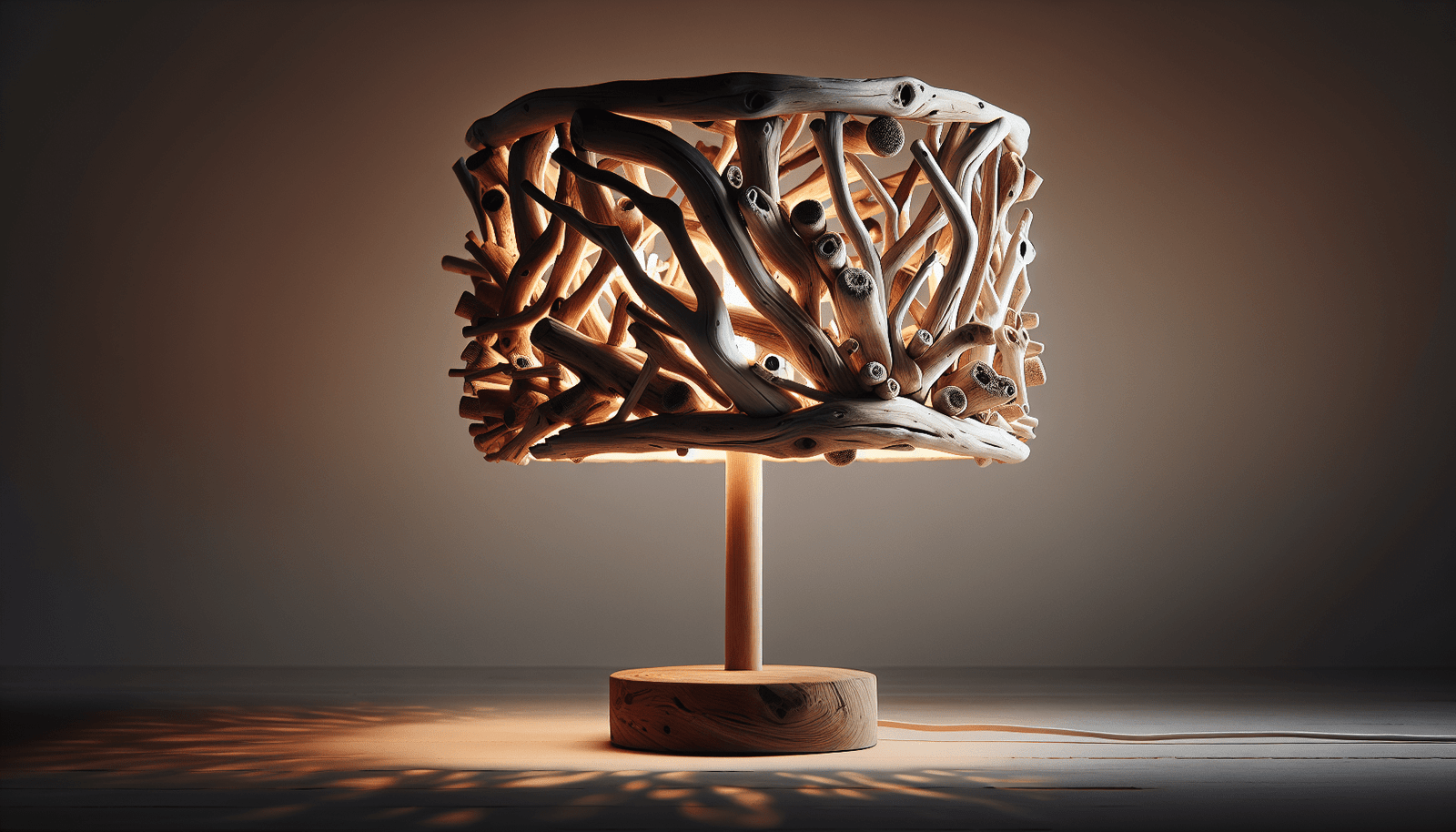
Creating Your Driftwood Lampshade
Making your own driftwood lampshade can be a rewarding endeavor. Not only do you end up with a beautiful piece of functional art, but you also gain the satisfaction of crafting something unique with your hands.
Gathering Materials
The first step is gathering the necessary materials. You will need to go on a driftwood hunt, perhaps a fun outing to your local beach. Look for pieces that appeal to you in terms of shape and size, considering how they might fit together in a lampshade form.
Here’s a basic list of what you might need:
| Materials | Tools |
|---|---|
| Driftwood pieces | Drill |
| Lamp hardware kit | Hot glue gun |
| Shade frame | Sandpaper |
| Epoxy or wood glue | Protective gloves |
| Light bulb | Wire cutters |
Choosing the Right Driftwood Pieces
Selecting the right driftwood can be the most creative part. Consider the size of the lampshade you want to create and which pieces of driftwood will complement each other. It’s essential to ensure the wood is completely dried out to prevent any issues with moisture later on. Sand down any rough edges to make the pieces easier to handle and arrange.
Constructing the Lampshade
Once you have your materials ready, it’s time to start constructing your lampshade. Begin by arranging the driftwood on the frame, ensuring they align in a way that covers the entire structure and adheres securely. You can use wood glue or epoxy for bonding the driftwood to the frame, and for a quicker process, a hot glue gun can be handy. Drill appropriately sized holes if necessary to fit pieces together snugly.
Installing the Lamp Hardware
With the driftwood in place, attach the lamp hardware. Most lamp hardware kits come with instructions, making it easy to follow. Ensure the light bulb sits securely and test the electrical components before finalizing the setup.
Final Touches
To give your driftwood lampshade a finished look, consider sealing it with a clear, matte varnish. This not only protects the wood from dust and grime but also enhances its natural color and texture.
Caring for Your Driftwood Lampshade
Maintaining your driftwood lampshade is relatively simple but requires some attention to preserve its beauty.
Regular Cleaning
Dust the driftwood lampshade regularly with a soft, dry cloth. Avoid using water or any cleaning agents, as they might damage the wood or cause discoloration.
Managing Humidity
Try to keep the lampshade in areas with stable humidity levels. Fluctuations can cause the wood to crack or warp.
Light Bulb Considerations
Consider using LED bulbs, which emit less heat, helping preserve the integrity of the driftwood over time.

Styling Ideas for Driftwood Lampshades
The beauty of driftwood lampshades is in their versatility, fitting seamlessly in various decor styles. Here are some ideas on where to place your driftwood lampshade in your home:
Coastal Chic
If your home has a coastal chic style, a driftwood lampshade complements the light and airy vibes. Pair it with soft blues, sandy neutrals, and woven textures to create a serene and relaxing atmosphere reminiscent of a beach house.
Rustic Retreat
For a rustic or cabin-style home, a driftwood lampshade pairs perfectly with warm woods and cozy textiles, adding to the welcoming and homey feel.
Modern Minimalist
In a modern minimalist home, a single statement piece like a driftwood lampshade can add interest and texture without overwhelming the space. Pair it with simple, neutral decor to keep the focus on the unique features of the driftwood.
Eclectic Elegance
For those who prefer an eclectic style, the driftwood lampshade can serve as a conversation starter. Mix and match textures, colors, and patterns, using the lampshade as a central piece to tie elements of the room together.
Conclusion
The driftwood lampshade is more than just a source of light—it’s a piece of art, a talking point, and a sustainable choice that brings nature’s beauty into your home. Whether creating one yourself or purchasing a bespoke piece, the driftwood lampshade offers limitless potential to personalize and enhance your living space. As you admire its beauty and uniqueness, you’ll be reminded of the natural world and the creative possibilities that driftwood provides. Embrace this chance to bring a touch of the shoreline into your home, crafting an atmosphere filled with warmth, personality, and charm.

